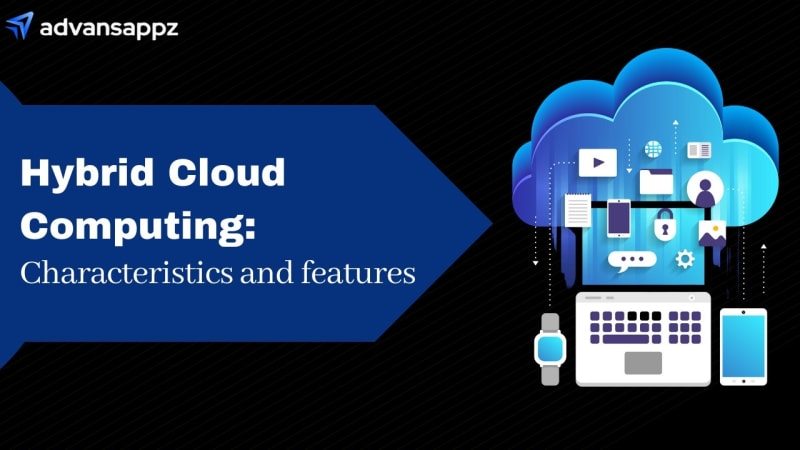Hybrid Cloud Computing: Characteristics and Features
In recent years, cloud computing has revolutionized the way businesses operate, enabling them to store, manage, and process data more efficiently and cost-effectively. One of the emerging trends within the cloud computing realm is hybrid cloud computing, which combines the benefits of both public and private clouds. In this article, we will explore the characteristics and features of hybrid cloud computing, shedding light on why it has gained traction among organizations of all sizes.
Defining Hybrid Cloud Computing
Hybrid cloud computing refers to the integration of public and private cloud environments, allowing organizations to leverage the advantages of both. It combines the scalability and cost-effectiveness of public clouds with the security and control offered by private clouds. This approach provides a flexible and customizable solution that caters to the specific needs of businesses.
Characteristics of Hybrid Cloud Computing
Flexibility and Scalability: Hybrid cloud environments offer unparalleled flexibility by allowing organizations to seamlessly scale their resources up or down. They can allocate workloads and data between public and private clouds as needed, accommodating fluctuating demands and ensuring optimal performance.
Enhanced Security: Security concerns have been a major hindrance to widespread cloud adoption. Hybrid cloud computing addresses these concerns by enabling organizations to keep sensitive and critical data within their private cloud, protected by their own security measures, while still taking advantage of the scalability and cost-efficiency of public clouds for non-sensitive data.
Cost Optimization: Hybrid cloud models enable businesses to optimize costs by leveraging the scalability and cost-effectiveness of public clouds for non-sensitive workloads, while retaining control over mission-critical applications and sensitive data in a private cloud. This approach ensures that organizations only pay for the resources they actually need while maintaining data security.
Regulatory Compliance: Many industries, such as healthcare and finance, have strict regulatory requirements regarding data privacy and security. Hybrid cloud computing allows organizations to comply with these regulations by keeping sensitive data within their private cloud, while still taking advantage of public clouds for non-sensitive data processing.
Disaster Recovery and Business Continuity: Hybrid cloud environments provide robust disaster recovery and business continuity capabilities. By replicating critical data and applications in both public and private clouds, organizations can ensure high availability and quick recovery in the event of a disaster or system failure.
Features of Hybrid Cloud Computing
Workload Portability: Hybrid cloud computing offers the ability to move workloads seamlessly between public and private clouds. This portability allows organizations to optimize resource allocation, leverage specialized services from public cloud providers, and avoid vendor lock-in.
Resource Orchestration: Hybrid cloud environments provide tools and platforms for efficient resource orchestration, allowing organizations to manage their infrastructure, applications, and data across multiple clouds. This feature simplifies the management and monitoring of resources, enhances operational efficiency, and improves overall productivity.
Hybrid Cloud Management: Managing a hybrid cloud environment requires specialized management tools that enable organizations to monitor, control, and optimize their resources across both public and private clouds. These management platforms provide centralized visibility, automation, and policy enforcement, simplifying the complex task of managing hybrid infrastructure.
Integration and Interoperability: Hybrid cloud computing emphasizes seamless integration and interoperability between different cloud environments. It allows organizations to leverage existing on-premises infrastructure, legacy systems, and third-party applications by integrating them with the cloud, enabling a cohesive and unified IT environment.
Multi-Cloud Strategy: Hybrid cloud computing encourages the adoption of a multi-cloud strategy, which involves using multiple public cloud providers alongside private cloud infrastructure. This approach reduces dependence on a single cloud provider, mitigates risks, and allows organizations to select the most suitable services from different providers based on their specific requirements.
Challenges of Hybrid Cloud Computing
While hybrid cloud computing offers numerous benefits, it also presents certain challenges that organizations need to address:
Complexity: Managing a hybrid cloud environment can be complex due to the integration of multiple cloud platforms and the need to ensure seamless communication between them. It requires specialized skills and expertise to design, deploy, and maintain a hybrid infrastructure effectively.
Data Governance and Compliance: With data being distributed across both public and private clouds, ensuring consistent data governance and regulatory compliance can be challenging. Organizations must establish robust policies and procedures to manage data privacy, security, and compliance across the hybrid cloud environment.
Interoperability Issues: Integrating different cloud platforms and ensuring interoperability between them can be challenging. Organizations need to consider factors such as data formats, APIs, and service-level agreements (SLAs) when designing their hybrid cloud architecture.
Vendor Management: Adopting a hybrid cloud model often involves working with multiple cloud service providers. Managing relationships with these vendors, negotiating contracts, and ensuring consistent service delivery can be demanding.
Cost Optimization: While hybrid cloud computing offers cost optimization opportunities, managing costs effectively can be complex. Organizations must carefully monitor resource usage, optimize workload placement, and leverage automation tools to avoid unnecessary expenses.
Best Practices for Hybrid Cloud Adoption
To successfully adopt and leverage hybrid cloud computing, organizations should consider the following best practices:
Define Clear Objectives: Clearly define the goals and objectives of adopting a hybrid cloud model. Identify the specific workloads and data that will reside in each cloud environment and outline the desired outcomes, such as improved scalability, cost savings, or regulatory compliance.
Comprehensive Planning: Develop a comprehensive migration and integration plan that takes into account the existing IT infrastructure, security requirements, compliance regulations, and future growth projections. Assess the compatibility of different cloud platforms and ensure proper data governance and security measures are in place.
Robust Security Measures: Implement robust security measures across both public and private cloud environments. This includes encryption, access controls, regular vulnerability assessments, and monitoring solutions to detect and respond to potential threats effectively.
Automation and Orchestration: Leverage automation and orchestration tools to streamline management tasks and ensure efficient resource allocation and workload placement across the hybrid cloud. This can improve operational efficiency, reduce manual errors, and enhance overall productivity.
Regular Monitoring and Optimization: Continuously monitor the performance and usage of the hybrid cloud environment. Identify opportunities for optimization, such as workload balancing, resource scaling, and cost optimization, and make adjustments as needed to ensure optimal efficiency and cost-effectiveness.
Conclusion
Hybrid cloud computing offers organizations a powerful and flexible solution by combining the advantages of public and private clouds. Its characteristics, such as flexibility, enhanced security, cost optimization, regulatory compliance, and disaster recovery capabilities, make it an attractive option for businesses of all sizes. However, organizations must also address the challenges associated with hybrid cloud adoption, including complexity, data governance, interoperability, vendor management, and cost optimization. By following best practices and implementing proper planning, security measures, and management strategies, organizations can unlock the full potential of hybrid cloud computing and drive innovation, agility, and growth in the digital era.





Top comments (0)